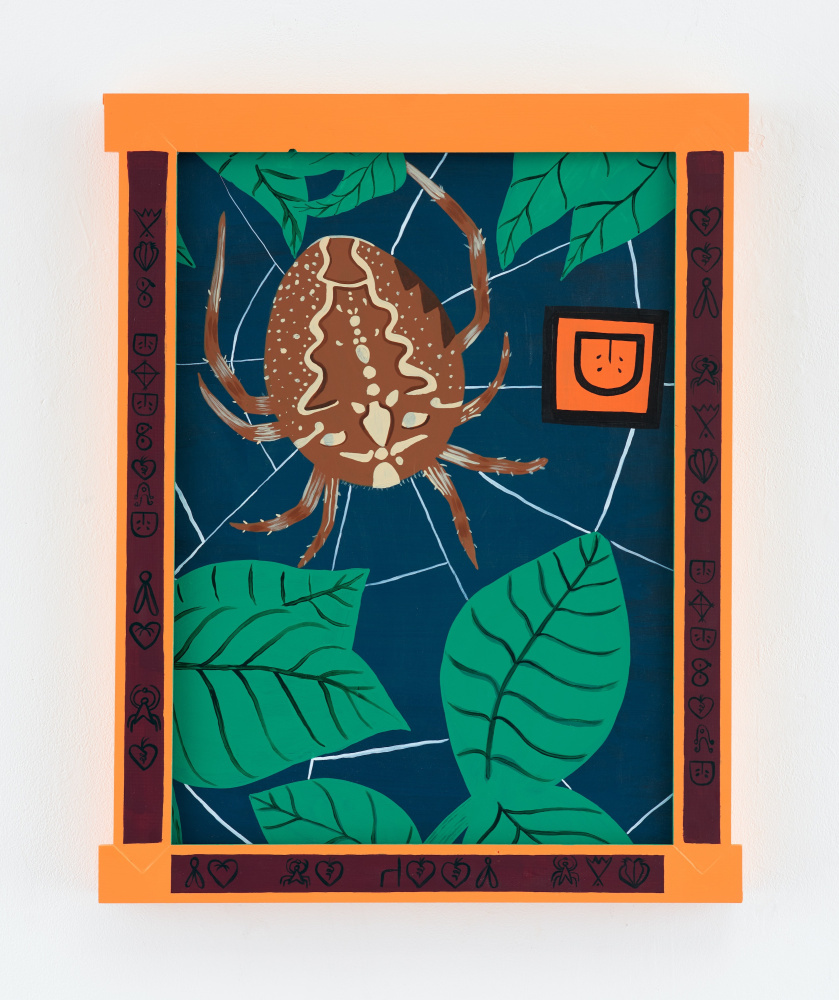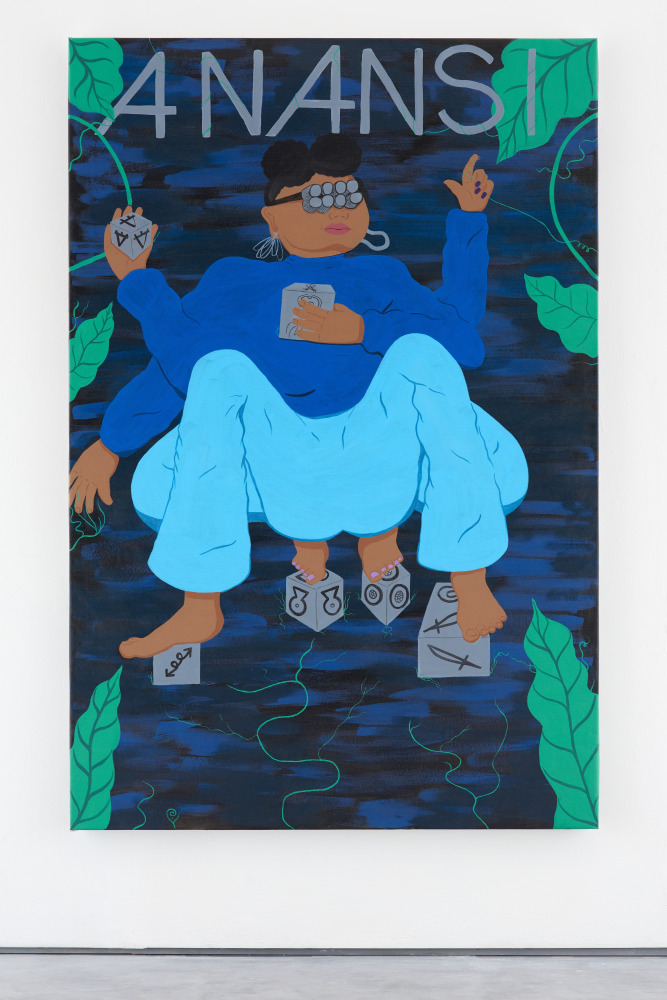Anansi’s domain—the spider’s web—is lighter than cotton, stronger than steel, and almost invisible to the human eye. Its strength and flexibility can withstand hurriance winds, as resilient and remarkable as the psyche of Africans who survived the transatlantic slave trade. In Modes #2 (2024) the artist depicts an anatomically correct spider sitting on an orb web, brown and patterned with cream spots and cursive lines. It is surrounded by Loewe’s handmade orange frame inscribed with their chosen symbols. As engineers of webs of possibility, Africans evolved their own internal guidance mechanisms and epistemological systems to navigate treacherous crossings. Like the silken fibers of a spider’s web, their mind maps are made up of infinite diaphanous strands of ancestral memory.
Loewe has a well-articulated, acutely perceptive visual art practice that is attuned to such subtle frequencies. Over time, their works have become bigger in scale, featuring a bolder color palette and exploring different materialities in painting, drawing, and sculpture. Their interdisciplinary thinking is shape-shifting and inventive, learning from the spiders they observed at close hand in the Amazon. “Spiders are innovators, often feared and largely misunderstood,” Loewe has written, describing them as a “grounding force” and unbroken thread in their current practice.
Their work invokes Anansi as an icon of ancient wisdom whose liminal position between the worlds opens distinct possibilities for present and future generations. These African fables are more than beloved children’s tales; they continue to nourish new narratives, to play an important role in the ongoing process of making and remaking cultural identity.
Like Anansi, Loewe’s paintings seem to say, may we all master the art of living and become experts in mischief and transformation, upsetting the order of things and making rebellion the only option.


